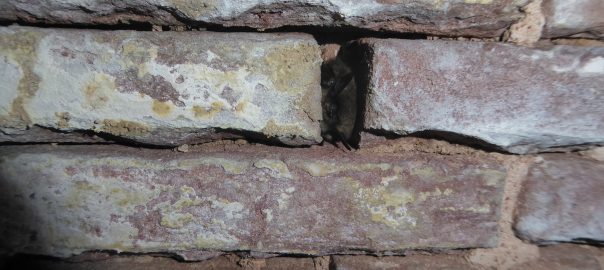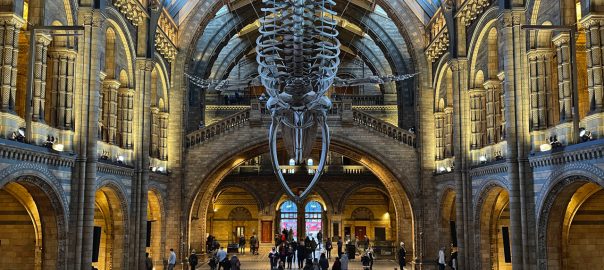I am going to take an iconoclastic view on how to conserve urban biodiversity in the real world: we do not need more research on defining the problem or defining the benefits of conserving biodiversity. I think we have enough models and empirical data to know which path to go and potential benefits. What really is needed is implementation and action. What we need is a concentrated effort on reaching the unconverted—namely the majority of the public, developers, and city planning officials who currently don’t see the value of urban biodiversity.

Now, I am the first to admit I have been part of that academic cadre that has created numerous articles on defining the problem and/or the benefits to conserving urban biodiversity. We have a plethora of studies that show improvements in biodiversity, carbon footprint, water quality, etc. when green infrastructure is conserved in cities (think conserved open spaces and conservation/restoration of native plants). I do think these studies form the backbone on how to move forward…but, on-the-ground, have we moved forward significantly? Why are most developers and cities not reducing turfgrass, using more native plants in landscapes, and making an effort to create wildlife habitat?
How many of the unconverted have read or accepted concepts of any urban biodiversity research articles, or even the blogs on this website? I suspect very few. I am not sure if you feel the same way, but I often feel that I am preaching to the converted through my articles. Sure, we have made steps towards the right direction, but as many of you have experienced, one step forward often results in three steps backwards. For example, that important piece of legislation on conserving open space is defeated with the next election; the one homeowner that transforms his/her yard is met with hostility from local neighbors and even a homeowner association; and the one maverick developer does something truly remarkable but his/her designs and management initiatives do not spread to other developers in the area. Each of us can think of efforts that ultimately result in minimal “real world” impacts.
Don’t get me wrong, I truly feel that any local development example that utilizes a conservation design pushes the bar a bit higher and helps further promote efforts to conserve urban biodiversity. However, except for the few remarkable cases, most efforts do not spread throughout a city. Local efforts are often met with pushback from conventional inertia, politics, ignorance, and just pure (or perceived) economics. How can we (more effectively) spread good design and conservation efforts throughout a city?
Ok—I titled the blog that we need to follow the money, but I have said very little about finances. I do think significant barriers to change are stemming from conventional inertia and money. Below, I am going to concentrate my comments on how to reach built environment professionals, which include developers, environmental consultants, and general contractors. This group, with one stroke of a pen or through day-to-day decisions, can have significant impacts if they decide to adopt alternative practices and designs.
From my experiences, developers, contractors, and hired environmental consultants have had to jump through a number of financial and regulatory hoops to make a development viable. Often, they have banks breathing down their necks; they have to adhere a number of different regulations from various agencies; and they are constantly worried about timing in the real estate market. Conserving biodiversity is often the furthest thing from their mind when subdividing land, and it is very difficult to make headway because they are used to doing things like they always have done to make a development work.
What I propose is a more concerted effort to understand the market and regulatory side from the perspective of the developer, and to help developers to jump through these regulatory hoops and make a project financially viable for developers to conserve biodiversity and make a profit.
In all development projects, time is money. Developers have learned and are often comfortable with conventional development designs because they prioritize what is needed to get their project passed through various regulatory and financial hurdles. When new design concepts and management practices are proposed, these are not time tested and they introduce uncertainty into a project and also a perceived or real cost increase. The additional costs could be from pure infrastructure or delays in getting a development order (which means paying more interest on the bank loan). It may also be that they think the homes in a “green” community will not sell because they may be lacking such things as turfgrass and exotic, showy plants. Development decisions are primarily made because of the bottom line—that is, money.
Making a profit is not a bad thing and I argue that if developments, especially green ones, do not make a profit, the odds of replication are slim. Most developers will not adopt new practices without some certainty that new designs and practices will not negatively affect their bottom line. Now, there are some studies that demonstrate that homes in green developments that have open space sell faster and more per square foot. Many green developments conserve natural open space and cluster the built areas, usually with the intent of conserving local plant and animal species. Of course a developer could view that conserving open space means a reduction in buildable space (ergo—money), but most clustered designs allow for the same number of buildable units. Thus, we may be thinking that there will be no financial impact, but developers will often argue that smaller lots and mixed use housing will not sell in their markets. This may or may not be true as there are examples of clustered designs selling quite well. The trick is to get one or two maverick developers to take the plunge and be successful.
How to make conserving biodiversity enticing? Show them the money!
We need to increase awareness of the costs of conventional design concepts vs. green development designs and how much land/money developers could save by doing a green design. In many instances, a side-by-side cost analyses of a fragmented design versus a clustered design will save a developer a remarkable amount of money. For example, in a cost analyses looking at road infrastructure for a proposed subdivision in Florida, costs were assessed for a fragmented versus a compact design (4,000 units in both cases). The compact design saved over 145 million dollars in road construction, landscape maintenance costs significantly decreased, and reduced fuel costs by residents over $13,000,000!
Another route to bring people into the conversation is to offer time saving and cost incentive-based policies that directly impact their bottom line. Incentives can go along the lines of density bonuses (i.e., awarded additional units over current regulations), permit breaks, fast-tracking applications, and reduced impact fees. All of these policies improve the economic bottom line, but which incentives are ultimately the most attractive will be different in different localities. Thus, built environment professionals need to be surveyed and educated to help determine what they would prefer. Further, once a policy is in place, it needs to be marketed so local builders know about the opportunity and the benefits of adopting the policy. From an analysis that we did on incentive-based policies, we found that most incentive-based policies have little impact (building practices, landscaping practices, site development). From our review of incentive-based policies, failure to reach most builders stemmed from:
1. Local built environment professionals did not view the incentive as a “good enough” incentive.
2. Many incentives were not taken advantage of because local developers did not know about them.
3. In some cases, various governmental agencies were not on board when the policy was passed and the novel approaches proposed by the developer actually slowed down the approval process!
For example, in my hometown (Gainesville, FL), a local developer adopted an LID (Low Impact Development) stormwater treatment approach but local regulators did not want to pass this design, and the permitting process was delayed.
Honestly, getting developers who are not convinced in the concepts of conserving boidiversity requires some enabling conditions at the policy level. I have found that if policy is in place (that addresses biodiversity conservation in some fashion), it will help built environment professionals pay attention and seek out counsel and methods to address the concepts of conserving urban biodivesity. However, even decent legislation has loopholes and developers can find ways around them if they do not buy into the intent of the policy. Trust needs to be built between planners, conservationists, and developers, but this is sometimes difficult to do. From my experiences, it takes partnering with that one maverick developer to get the ball rolling. Once established, this model development will provide local, tangible results to help bring other along.
Is there a silver bullet here? No. It is going to take some forays (by ecologists, developers, planners, and conservationists alike) into the built environment world to see what financial incentives will and will not work. This can be trail and error but it also can be systematic social science research about finding the right financial message to reach more developers to adopt novel conservation practices. Giving my two cents, I am convinced that academics need to form interdisciplinary consulting teams and collaborate with local developers and planners to build model “green” communities. We have tried to do this at the University of Florida, forming a group called the Program for Resource Efficient Communities (PREC). We have had our ups and downs with this group, but in collaborating with local developers we have learned much about what goes on in the development world and possible ways to merge research with “real world” activities.
So, how to get started? Below are some steps to get the ball rolling.
1. Meet with local planners and see if there are current policies or opportunities to encourage local developers to adopt biodiversity conservation strategies for planned developments. This also can open the door to help shape future policies.
2. Find that one developer that is willing to adopt novel practices and designs. A local model example pays huge dividends for future development in the area.
3. Develop some continuing education courses and offer them to built environment professionals. PREC has several courses and I have a conserving biodiversity course offered online.
4. Develop local recognition and certifications for those model developments. Be careful of “green washing” certification programs that do not offer much in terms of biodiversity conservation. The best one I have found for conserving biodiversity is in the North Carolina Wildlife Friendly Certification Program.
Mark Hostetler
Gainesville, Florida







Leave a Reply